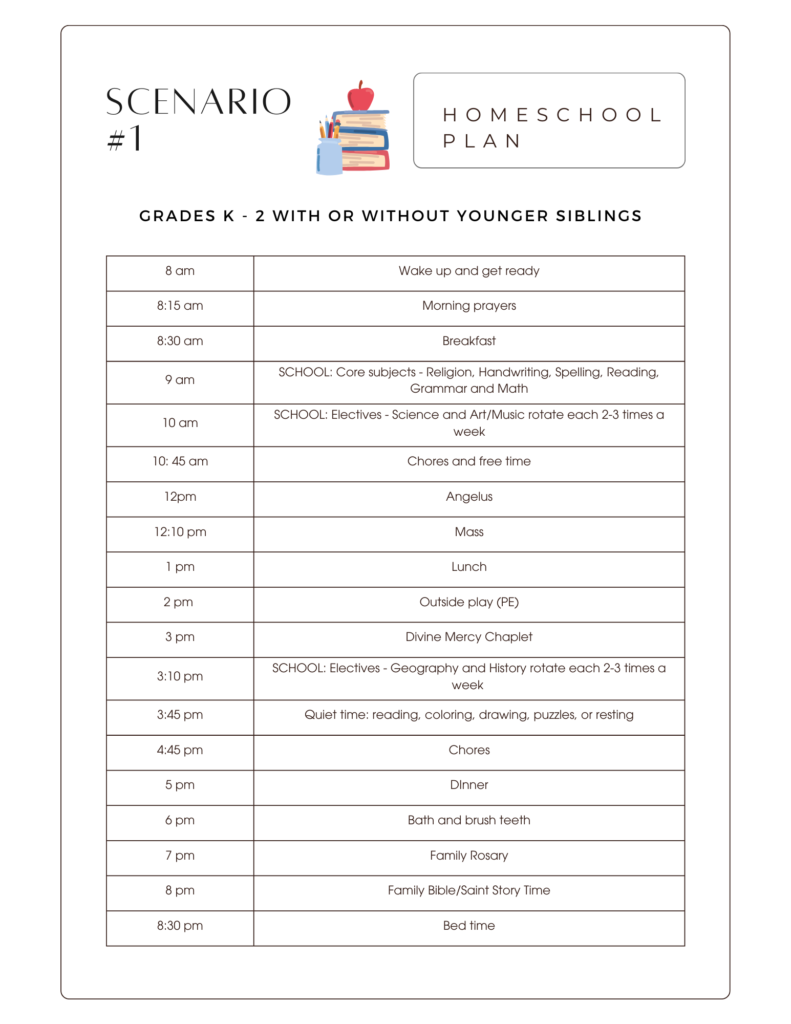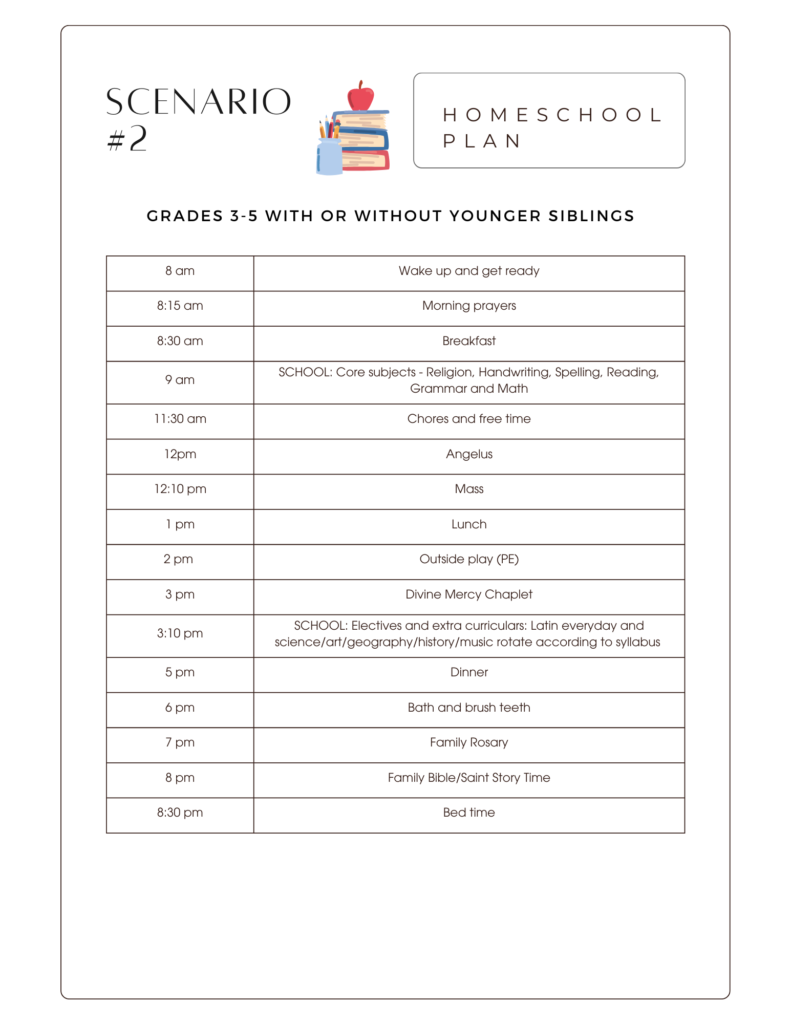Sharing is caring!
A Guide to Creating a Daily Homeschool Schedule
Homeschooling offers a unique and personalized approach to education, and with a personalized daily homeschool schedule parents can tailor their child’s learning experience to their individual needs and interests.
A daily homeschool schedule must promote learning, engagement, and a healthy balance between academic and non-academic activities.
It can be stressful to determine how and what to prioritize.
In this blog post, I’ll guide you through the process of developing a well-rounded daily homeschool schedule that sets the stage for successful learning as well as incorporating prayer and flexibility into your day.
OVERVIEW
I’ve created this cheat sheet to help you create a balanced and effective homeschool schedule. I will even show you how to fit in daily Mass and prayer throughout the day. I will provide a variety of sample schedules based on:
- Family size
- Ages of children
- Participation in extracurriculars and co-ops
If you have trouble with determining how to use your time efficiently, this guide is about to become your best friend.
Daily Homeschool Schedule Ideas
What is a typical daily homeschool schedule?
The hardest thing about developing a daily homeschool schedule is that every family is different, and there is no one-size-fits-all solution.
That said, I will provide a few different scenarios and you can mix and match the ones that are most helpful to you so that you can tailor a perfect schedule for your family.
While planning a schedule is difficult, homeschool life is very flexible.
Homeschoolers can get schoolwork done much more efficiently and quickly than children in school.
Does your child struggle in math? Schedule more math time throughout the day.
Is your child an aspiring ice skater? Homeschooling can allow her ample practice time while also allowing her to complete her schoolwork in a timely fashion.
Do both parents work? You can do school whenever works best for your schedule.
Tips for New Homeschoolers
If you are a new homeschooler and do not know where to begin, I suggest purchasing an open and go curriculum that includes lesson plans.
In an open and go curriculum, all materials as well as a complete lesson plan will arrive in a box and you can just open it up and decide:
1. How many days you want to do school
2. When you will start and finish your school year while also considering when you want to take breaks.
Everything will be laid out by subject and day including when to give tests and quizzes. This is the easiest solution for a new or very busy homeschool parent.
If you feel confident but would still like a little guidance, many curricula allow you to purchase a lesson plan along with a specific subject.
This option is great if you want to pull material from various companies and curricula, but still need some guidance on what to teach and complete each day.
Below are some sample schedules showing how you can lay out your day based on different factors such as family size, ages of children, and co-op participation. (For schedules for toddlers and preschoolers, please see this post)
First, let’s look at a very basic version of a schedule.
I have included 3 schedules: one for the early birds, one for the early risers, and one for the night owls.
In these templates, we are including eating, Mass, prayer, and other basic things like getting ready so we can see the blocks of time we have for school.
Times and durations for these will vary from family to family:
You can see that once you set the non-negotiable times in your family schedule, you can then fill in school based on how much time each child needs to complete his or her work. Below is the early riser schedule with different scenarios filled in for different families:


Another option is to complete electives all together as a family (such as religion, bible, geography, science, art, music, and history).
This saves planning and teaching time for a parent of multiple children.
You may sometimes have to adapt material to make it easier and harder based on the level of the books or curricula you choose.
Usually, very young children can just absorb the information by simply listening in on the lessons while coloring or playing quietly.
Weekly Homeschool Schedule
Everyday may or may not look the same, depending on your family.
For example, many children in the elementary years only do school 4 days per week.
The 5th day may be used for field trips and/or a co-op.
Families who school 5 days a week can spread the schoolwork out a little more, and perhaps use mornings, afternoons, or Saturdays for extra activities.
Bookmark this cheatsheet for all your daily homeschool schedule needs
And there you have it. Tailoring a perfect daily homeschool schedule for meeting your family’s unique needs!
Sharing is caring!
